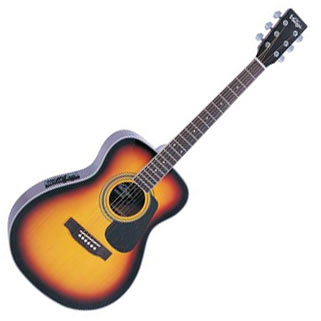A Rough Guide To Adjusting The Settings Of An Acoustic Blues Guitar
 Guitar
"action" simply means the distance of the string over the twelfth
fret, and a reasonably low action is important for any acoustic blues
guitarists.
Guitar
"action" simply means the distance of the string over the twelfth
fret, and a reasonably low action is important for any acoustic blues
guitarists.
If you wanted to perform several guitar fingerpicking styles, then a medium action should be
aimed for.
Too low and the strings will make a buzzing sound - too high and it will be hard to hold them down.
On the other side of the coin, some guitarists
may prefer a slightly higher action, for example if the instrument is to be used mainly
for playing bottleneck guitar.
Setting The Action Of The Guitar
The action can be set by changing the saddle height, which of course changes the distance between the strings and frets along the length of the fret board.
To do this you need to measure the distance of the bass E and treble E strings from the 12th fret. For a medium playing action that suits fingerpicking guitar and strumming styles of playing, the distance at the 12th fret should be a little under three millimeters for the bass E, and around two millimeters for the high E.
Because the
12th fret of the guitar is precisely half way along the string, you should note the amounts
by which the action should be adjusted higher or lower for the 1st and 6th strings,
and adjust the saddle by double that amount.
If the guitar saddle needs to be lowered, this can be done by filing material away from the base of the saddle. If it needs to be a little higher, a shim of hardwood of the right thickness should be inserted under the base.
You must additionally make sure that the bottom of the saddle is perfectly flat, which is very important if it's an electro-acoustic guitar, because a flat bottom is required for good pickup response.
Adjusting The Guitar Neck
Many acoustic guitars are fitted with a truss rod, which can be adjusted either at the heel of the neck inside the sound box, or at the head stock.
This rod balances concave curvature, by exerting a force in the neck which opposes that caused by string tension. The strings attempt to pull the guitar neck into a curve. We have to have a little curve, so that the strings don't touch the frets when vibrating after being hit hard.
Take off cover of the truss rod end, if your guitar is so equipped, and fit a capo on the 1st fret of the guitar.
Fret the 6th string at the 14th fret with your right hand. With a feeler gauge, measure the distance between the top of the fifth fret and the underneath of the sixth string.
There
should be a little space, between 0.15 and 0.05 mm. If you find that your
strings buzz, the rod could be adjusted too tight, straightening the neck too
much. Loosen the rod a bit, measure again and try it out.
If the neck
has too much curvature, then tighten the truss rod. On Martin guitars, use a five
millimeter allan key to rotate the truss rod adjusting nut clockwise to
straighten the neck and to the left to add some curvature.
Guitar Adjustments Best Done By A pro
Medium gauge guitar strings (.013"-.056") have higher tension, and so need more truss rod tension to counteract the tension produced by thicker strings. This produces more volume, sustain and more rounded guitar tone.
One final word, if you find that you need a lot of force, or you're not comfortable carrying out this adjustment, have your guitar adjusted by a dealer.
Jim Bruce Plays Deep River Blues by Doc Watson




